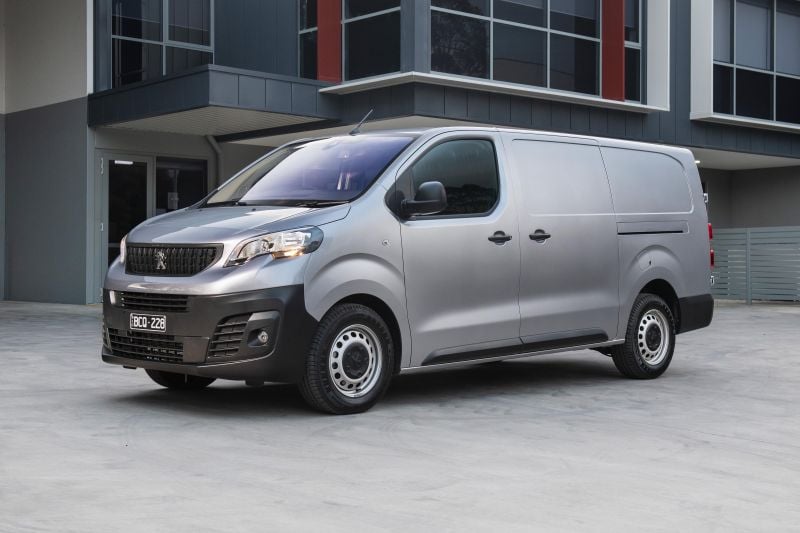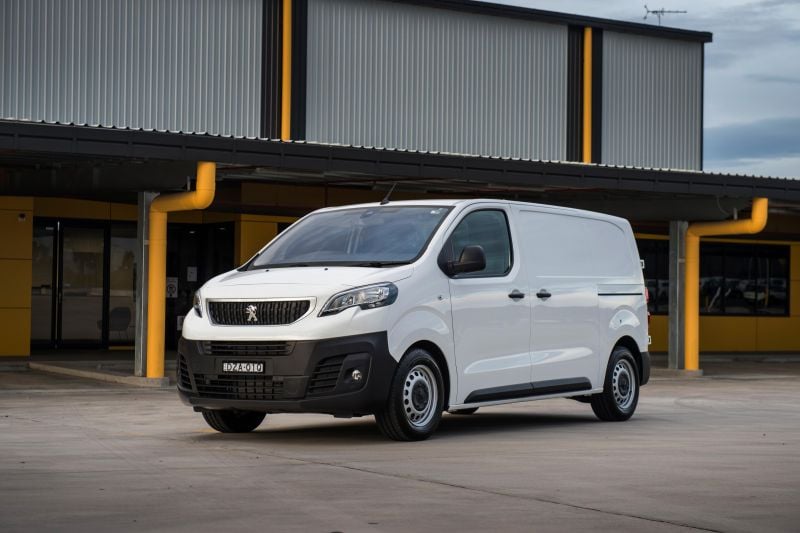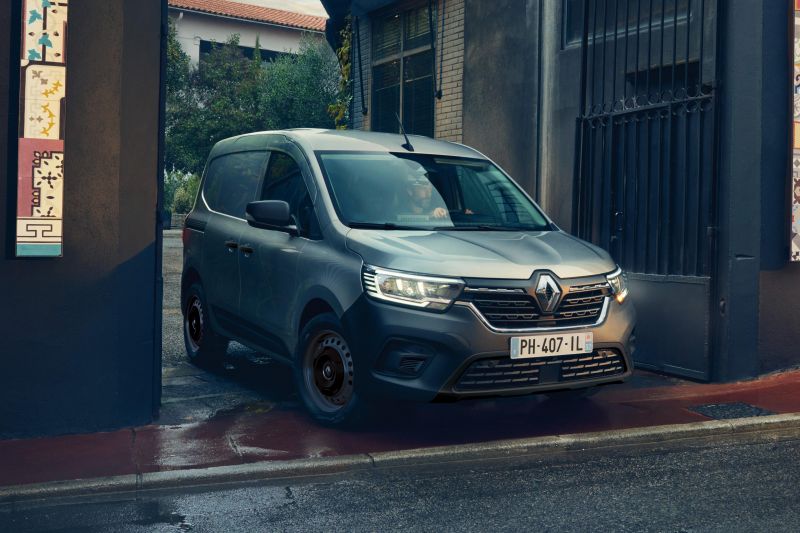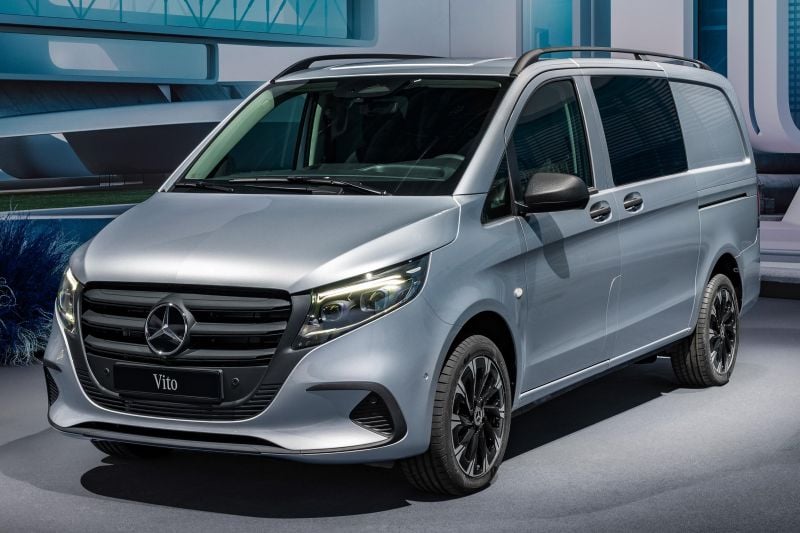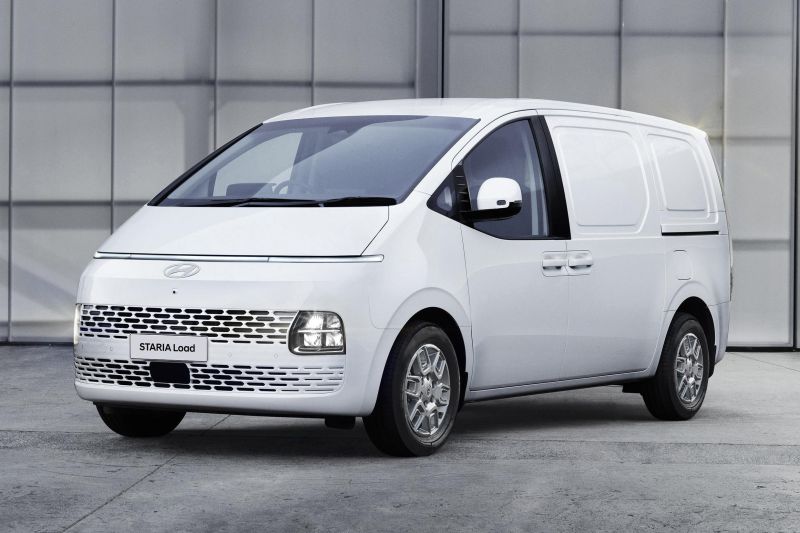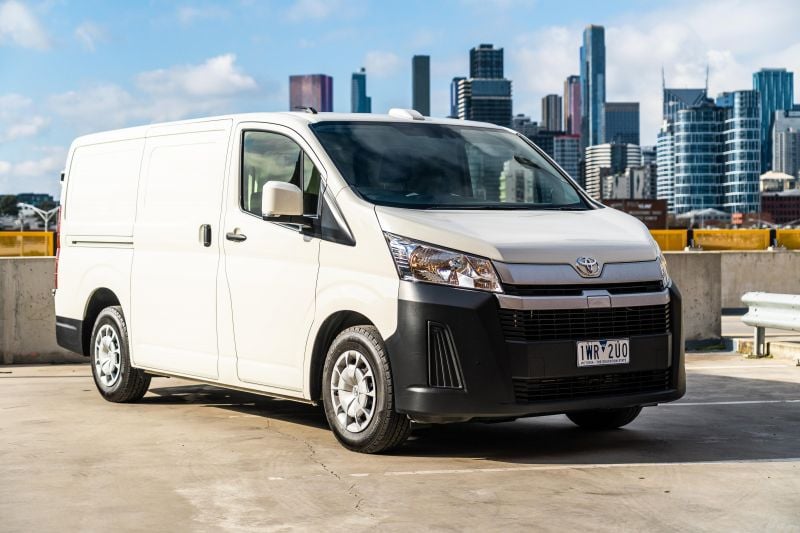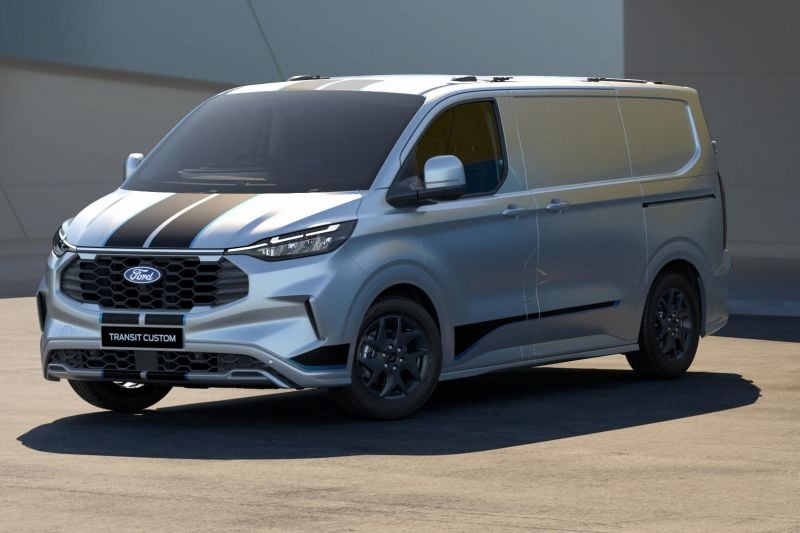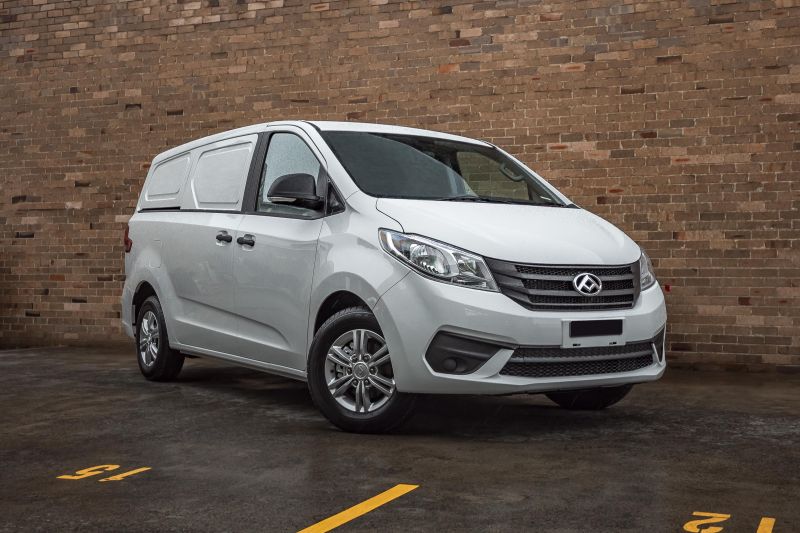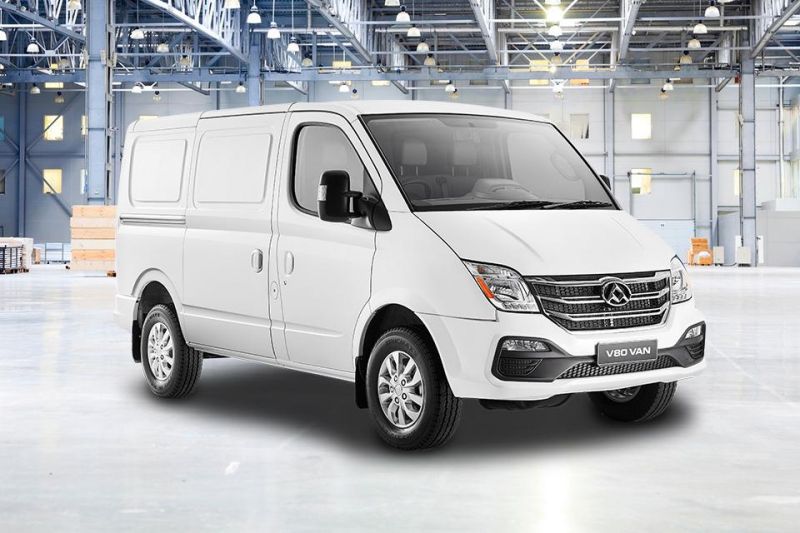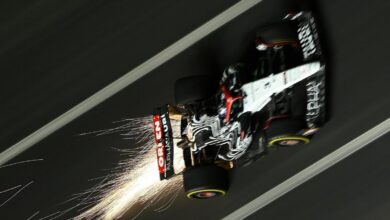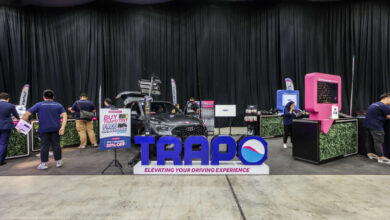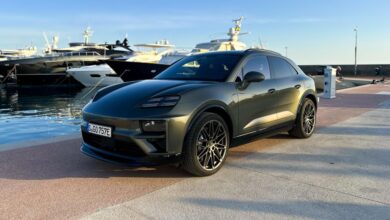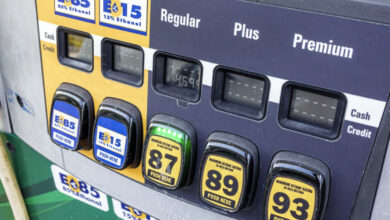The most fuel efficient commercial vans in Australia
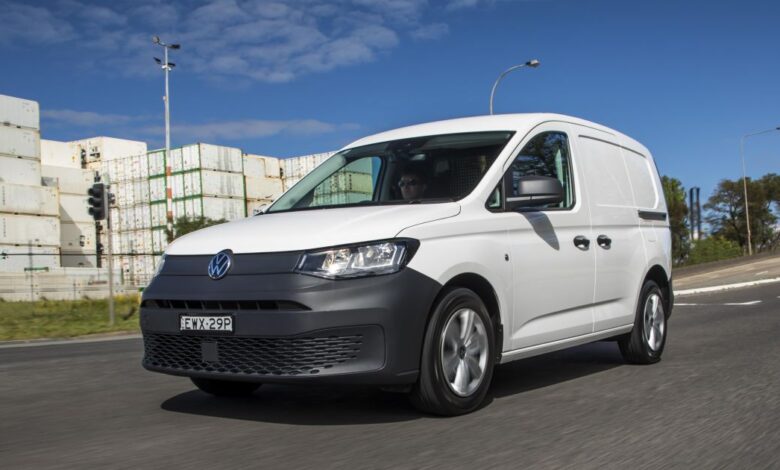
These vehicles were made to work, and more time on the road allows drivers to maximise their productivity.
Having better fuel economy means you’ll be spending less time at the pump, while also saving on the costs over the life of your van.
But if you’re in the market for a new van, how can you know which will give you the best fuel economy?
To find out, we’ve combined the ‘vans less than 2.5 tonnes’ and ‘vans between 2.5 and 3.5 tonnes’ categories on the VFACTS sales charts and compared them based on their best claimed fuel economy figure.
There are a range of different fuel and powertrain types available in these two categories, including electric options from LDV, Mercedes-Benz, Peugeot, and Renault. We’ve left those out for this comparison, and will look at them in greater detail in a future article.
We’ve only listed the individual variant of each van with the best claimed fuel economy below, but the full lineup of each model has been detailed throughout the article.
Click on a car’s name above to jump directly to its information on the page, or continue scrolling for the full list.
Volkswagen Caddy
Volkswagen’s smallest van tops this list, with all diesel versions of its Caddy consuming a claimed 4.9L/100km on the combined cycle.
TDI models use a 2.0-litre turbo-diesel four-cylinder engine, mated to either a six-speed manual transmission or a seven-speed dual-clutch automatic transmission depending on the variant. TDI280 models produce 75kW and 280Nm, while TDI320 models produce 90kW and 320Nm.
TSI models replace the diesel with a turbocharged 1.5-litre four-cylinder petrol engine, which produces 84kW and 220Nm.
It consumes 6.4L/100km when mated to a six-speed manual transmission, and when paired with a seven-speed dual-clutch automatic, fuel economy improves to 6.2L/100km.
The range opens at $40,990 before on-road costs for the base petrol TSI220 SWB manual, while the cheapest diesel is the TDI280 short-wheelbase manual at $42,990 before on-roads. Prices extend to $52,090 before on-roads for the top-spec TDI320 long-wheelbase automatic.
All Caddy models have a 50-litre fuel tank and are covered by a five-year, unlimited-kilometre warranty.
| Variant | Fuel economy (claimed) | Fuel type |
|---|---|---|
| Volkswagen Caddy TSI220 SWB manual | 6.4L/100km | 95 RON petrol |
| Volkswagen Caddy TDI280 SWB manual | 4.9L/100km | Diesel |
| Volkswagen Caddy TSI220 Maxi manual | 6.4L/100km | 95 RON petrol |
| Volkswagen Caddy TSI220 SWB auto | 6.2L/100km | 95 RON petrol |
| Volkswagen Caddy TDI280 Maxi manual | 4.9L/100km | Diesel |
| Volkswagen Caddy TDI320 SWB auto | 4.9L/100km | Diesel |
| Volkswagen Caddy TSI220 Maxi auto | 6.2L/100km | 95 RON petrol |
| Volkswagen Caddy TDI320 Maxi auto | 4.9L/100km | Diesel |
| Volkswagen Caddy TSI220 LWB auto | 6.2L/100km | 95 RON petrol |
| Volkswagen Caddy TDI320 LWB auto | 4.9L/100km | Diesel |
BUY: Get in touch with a dealer about a Volkswagen Caddy
MORE: Everything Volkswagen Caddy
Peugeot Partner
The Peugeot Partner places second on the list, and all four of its variants drink a claimed 5.9L/100km on the combined cycle.
There’s only one engine available, and that’s a turbocharged 1.2-litre three-cylinder petrol with 96kW of power and 230Nm of torque. You can only get it with an automatic transmission, as the six-speed manual was dropped this year.
The Partner is one of the only vans here with no diesel option, instead requiring a minimum of 95 RON premium unleaded petrol from a 60-litre tank.
This year brought a price increase of either $2000 or $2500 depending on the model, with the range now opening at $39,990 before on-road costs and extending to $45,990 before on-roads.
| Variant | Fuel economy (claimed) | Fuel type |
|---|---|---|
| Peugeot Partner Pro Short | 5.9L/100km | 95 RON petrol |
| Peugeot Partner Pro Long | 5.9L/100km | 95 RON petrol |
| Peugeot Partner Premium Short | 5.9L/100km | 95 RON petrol |
| Peugeot Partner Premium Long | 5.9L/100km | 95 RON petrol |
BUY: Get in touch with a dealer about a Peugeot Partner
MORE: Everything Peugeot Partner
Peugeot Expert
The Expert makes it two Peugeots in a row, and the two manual versions have the best claimed fuel efficiency at 6.0L/100km.
There are six variants in total, and all utilise a 2.0-litre turbo-diesel four-cylinder engine producing 110kW and 370Nm. Power is sent through only the front wheels, with no option for rear- or all-wheel drive.
The six-speed manuals open the six-strong range, with four eight-speed automatic options completing the list. The latter models have a claimed fuel economy of 6.3L/100km on the combined cycle, while all Experts have a 70-litre fuel tank.
If you want a manual option, the cheapest one is the City short-wheelbase for $43,397 before on-road costs. The range extends to $52,565 before on-roads for the Premium long-wheelbase automatic, and all versions are covered by a five-year, 200,000km warranty.
| Variant | Fuel economy (claimed) | Fuel type |
|---|---|---|
| Peugeot Expert City SWB manual | 6.0L/100km | Diesel |
| Peugeot Expert Pro Long manual | 6.0L/100km | Diesel |
| Peugeot Expert Pro SWB auto | 6.3L/100km | Diesel |
| Peugeot Expert Pro Long auto | 6.3L/100km | Diesel |
| Peugeot Expert Premium SWB auto | 6.3L/100km | Diesel |
| Peugeot Expert Premium Long auto | 6.3L/100km | Diesel |
BUY: Get in touch with a dealer about a Peugeot Expert
MORE: Everything Peugeot Expert
Renault Kangoo
Keeping it French is the Renault Kangoo, which has a claimed fuel economy of 6.2L/100km with its two automatic variants.
The Kangoo is the second and final car on this list to not offer a diesel engine, instead opting for a turbocharged 1.3-litre four-cylinder engine that drinks 95 RON premium unleaded petrol. Outputs are quoted at 96kW and 240Nm.
You can still buy a six-speed manual version, which will set you back $38,990 before on-road costs. It’s among the cheaper vans here, though its fuel economy is marginally higher than its automatic siblings at 6.4L/100km.
The short- and long-wheelbase automatics employ a seven-speed dual-clutch transmission and cost $41,990 and $43,990 before on-roads respectively.
All versions are front-wheel drive only, have a 54-litre tank, and are covered by Renault’s five-year, 200,000km warranty.
| Variant | Fuel economy (claimed) | Fuel type |
|---|---|---|
| Renault Kangoo SWB manual | 6.4L/100km | 95 RON petrol |
| Renault Kangoo SWB auto | 6.2L/100km | 95 RON petrol |
| Renault Kangoo LWB auto | 6.2L/100km | 95 RON petrol |
BUY: Get in touch with a dealer about a Renault Kangoo
MORE: Everything Renault Kangoo
Renault Trafic
There are many more Trafic variants compared to the Kangoo, and again it’s the automatic versions that are the most efficient at 6.5L/100km.
The Trafic is larger than the Kangoo, and its fuel economy is generally higher. There are still two six-speed manuals available, though their fuel economy is worse at 7.2L/100km.
All are powered by a 2.0-litre turbo-diesel four-cylinder engine producing 125kW and 380Nm, though the models fitted with an automatic transmission benefit from a six-speed dual-clutch unit.
An 80-litre fuel tank is standard across the range, and the cheapest Trafic you can buy is the Pro short-wheelbase manual at $49,000 before on-road costs. The price reaches as high as $63,000 before on-roads, which will buy you the Crew Lifestyle long-wheelbase automatic.
The range is covered by a five-year, 200,000km warranty with five years of roadside assistance.
| Variant | Fuel economy (claimed) | Fuel type |
|---|---|---|
| Renault Trafic Pro SWB manual | 7.2L/100km | Diesel |
| Renault Trafic Pro SWB auto | 6.5L/100km | Diesel |
| Renault Trafic Pro LWB manual | 7.2L/100km | Diesel |
| Renault Trafic Pro LWB auto | 6.5L/100km | Diesel |
| Renault Trafic Premium SWB auto | 6.5L/100km | Diesel |
| Renault Trafic Premium LWB auto | 6.5L/100km | Diesel |
| Renault Trafic Crew Pro LWB auto | 6.5L/100km | Diesel |
| Renault Trafic Crew Lifestyle LWB auto | 6.5L/100km | Diesel |
BUY: Get in touch with a dealer about a Renault Trafic
MORE: Everything Renault Trafic
Mercedes-Benz Vito
The most expensive van on this list is the Mercedes-Benz Vito, which in its cheapest variant has a claimed fuel economy of 6.9L/100km.
That variant is the 116CDI medium-wheelbase automatic, priced at $64,480 before on-roads. Like the rest of the range it’s powered by a 1.9-litre turbo-diesel four-cylinder engine, but because it’s a 116CDI outputs are reduced to 120kW and 380Nm.
119CDI models bump outputs to 140kW and 440Nm, though they bring an increased fuel economy figure of between 7.2L/100km and 7.5L/100km. There are no manual transmission options available for the Vito van range, and all offer a 70-litre tank as standard.
The van range extends as high as the 119CDI long-wheelbase, which is priced at $72,470 before on-roads. Crew cab offerings start at $73,427 before on-road costs and reach as high as $81,399 before on-roads.
| Variant | Fuel economy (claimed) | Fuel type |
|---|---|---|
| Mercedes-Benz Vito 116CDI MWB auto | 6.9L/100km | Diesel |
| Mercedes-Benz Vito 116CDI LWB auto | 7.1L/100km | Diesel |
| Mercedes-Benz Vito 119CDI MWB auto | 7.2L/100km | Diesel |
| Mercedes-Benz Vito 119CDI LWB auto | 7.4L/100km | Diesel |
| Mercedes-Benz Vito 116CDI Crew Cab MWB auto | 7.2L/100km | Diesel |
| Mercedes-Benz Vito 116CDI Crew Cab LWB auto | 7.2L/100km | Diesel |
| Mercedes-Benz Vito 119CDI Crew Cab MWB auto | 7.5L/100km | Diesel |
| Mercedes-Benz Vito 119CDI Crew Cab LWB auto | 7.5L/100km | Diesel |
BUY: Get in touch with a dealer about a Mercedes-Benz Vito
MORE: Everything Mercedes-Benz Vito
Volkswagen Transporter
The second Volkswagen on this list is the Transporter, which matches the Vito with a claimed economy of 6.9L/100km in its base variant.
Its base variant is the TDI250 short-wheelbase, which is the only Transporter to be offered with a five-speed manual transmission. Like the rest of the range it’s powered by a 2.0-litre turbo-diesel four-cylinder engine, though it’s tuned down to 81kW and 250Nm.
TDI340 models produce 110kW and 340Nm with a choice of either a six-speed manual or seven-speed dual-clutch transmission, with 4Motion all-wheel drive available on automatic models.
Finally, TDI450 models develop 146kW and 450Nm and only offer a dual-clutch transmission, with 4Motion all-wheel drive available too. Fuel consumption varies depending on the model variant.
All models have an 80-litre fuel tank except the TDI250, which has a 70-litre tank. The range is covered by a five-year, unlimited-kilometre warranty, and opens at $42,790 before on-roads.
| Variant | Fuel economy (claimed) | Fuel type |
|---|---|---|
| Volkswagen Transporter TDI250 SWB 5sp manual | 6.9L/100km | Diesel |
| Volkswagen Transporter TDI340 SWB 6sp manual | 7.5L/100km | Diesel |
| Volkswagen Transporter TDI340 SWB auto | 8.3L/100km | Diesel |
| Volkswagen Transporter TDI340 SWB 4Motion auto | 8.3L/100km | Diesel |
| Volkswagen Transporter TDI450 SWB auto | 7.3L/100km | Diesel |
| Volkswagen Transporter TDI450 SWB 4Motion auto | 8.0L/100km | Diesel |
| Volkswagen Transporter TDI340 LWB 6sp manual | 7.5L/100km | Diesel |
| Volkswagen Transporter TDI340 LWB auto | 8.3L/100km | Diesel |
| Volkswagen Transporter TDI340 LWB 4Motion auto | 8.3L/100km | Diesel |
| Volkswagen Transporter TDI450 LWB auto | 7.3L/100km | Diesel |
| Volkswagen Transporter TDI450 LWB 4Motion auto | 8.0L/100km | Diesel |
| Volkswagen Transporter TDI340 SWB Crewvan auto | 8.3L/100km | Diesel |
| Volkswagen Transporter TDI340 SWB Crewvan 4Motion auto | 8.3L/100km | Diesel |
| Volkswagen Transporter TDI340 LWB Crewvan auto | 8.3L/100km | Diesel |
| Volkswagen Transporter TDI340 LWB Crewvan 4Motion auto | 8.3L/100km | Diesel |
BUY: Get in touch with a dealer about a Volkswagen Transporter
MORE: Everything Volkswagen Transporter
Hyundai Staria Load
The quirky looking Hyundai Staria Load ranks towards the bottom of the list, with all variants consuming a square 7.0L/100km on the combined cycle.
It’s offered with a choice of three configurations: a two-seat van, five-seat crew van, or a Premium two-seat van. All utilise the same 2.2-litre turbo-diesel four-cylinder engine, which produces 130kW of power and 430Nm of torque.
Drive is sent to the front wheels exclusively through an eight-speed automatic transmission, and the Staria drinks diesel from a 75-litre tank.
The range starts at $46,740 before on-roads for the two-seat van, with the other two variants priced at $50,640 and $51,740 before on-roads respectively. It remains the second-most popular 2.5-3.5 tonne van in Australia, behind the next van on this list.
| Variant | Fuel economy (claimed) | Fuel type |
|---|---|---|
| Hyundai Staria Load two-seat van | 7.0L/100km | Diesel |
| Hyundai Staria Load five-seat crew van | 7.0L/100km | Diesel |
| Hyundai Staria Load Premium two-seat van | 7.0L/100km | Diesel |
BUY: Get in touch with a dealer about a Hyundai Staria Load
MORE: Everything Hyundai Staria Load
Toyota HiAce
Australia’s most popular 2.5-3.5 tonne van is the Toyota HiAce, and its cheapest variant has a claimed fuel economy figure of 7.5L/100km on the combined cycle.
You can pick up the most economical HiAce, the manual long-wheelbase van, for $48,886 before on-road costs, and with it you get a six-speed manual transmission.
All other HiAce variants utilise a six-speed automatic transmission, and consume between 8.0L/100km and 8.4L/100km depending on the variant.
The range is powered by a 2.8-litre turbo-diesel four-cylinder engine producing 130kW of power and either 420Nm of torque with the six-speed manual or 450Nm with the six-speed automatic.
All models have a 70-litre fuel tank and are covered by a five-year, unlimited-kilometre warranty.
| Variant | Fuel economy (claimed) | Fuel type |
|---|---|---|
| Toyota HiAce LWB Van manual | 7.5L/100km | Diesel |
| Toyota HiAce LWB Van auto | 8.0L/100km | Diesel |
| Toyota HiAce LWB Panel Van auto | 8.0L/100km | Diesel |
| Toyota HiAce LWB Barn Door Van auto | 8.2L/100km | Diesel |
| Toyota HiAce LWB Barn Door Panel Van auto | 8.2L/100km | Diesel |
| Toyota HiAce LWB Crew Van auto | 8.4L/100km | Diesel |
| Toyota HiAce SLWB Van auto | 8.2L/100km | Diesel |
| Toyota HiAce SLWB Barn Door Van auto | 8.4L/100km | Diesel |
BUY: Get in touch with a dealer about a Toyota HiAce
MORE: Everything Toyota HiAce
Ford Transit Custom
Ford’s latest Transit Custom still boasts a well-known nameplate in the van world, and all variants consume a claimed 8.0L/100km on the combined cycle.
The cheapest version is the Trend short-wheelbase, which costs $55,990 before on-roads. Two Sport models are available too, which are priced as high as $62,990 before on-roads.
All models are powered by a 2.0-litre turbo-diesel four-cylinder, which produces 125kW and 390Nm. Front-wheel drive is offered as standard, along with an eight-speed automatic transmission.
A 70-litre fuel tank is standard across the range, while Ford also includes a 20-litre AdBlue tank. The Transit Custom is backed by a five-year, unlimited-kilometre warranty.
| Variant | Fuel economy (claimed) | Fuel type |
|---|---|---|
| Ford Transit Custom Trend SWB | 8.0L/100km | Diesel |
| Ford Transit Custom Trend LWB | 8.0L/100km | Diesel |
| Ford Transit Custom Sport SWB | 8.0L/100km | Diesel |
| Ford Transit Custom Sport Double Cab | 8.0L/100km | Diesel |
BUY: Get in touch with a dealer about a Ford Transit Custom
MORE: Everything Ford Transit Custom
LDV G10
The first of two LDVs on this list is the G10, which consumes a claimed 8.2L/100km in models fitted with a diesel engine.
Those two models are the G10+ manual and a version of the G10+ auto, which pack a 2.0-litre turbo-diesel four-cylinder engine mated to either a six-speed manual or an eight-speed automatic transmission. They’re priced at $37,358 and $39,463 drive-away respectively.
You can opt for a petrol engine with the G10+ automatic, in which a turbocharged 2.0-litre four-cylinder is fitted under the bonnet. Fuel economy is the worst of any van on this list at 11.1L/100km, and it costs $37,884 drive-away.
The petrol G10+ produces 160kW of power and 330Nm of torque, up from 118kW and 375Nm in the diesel versions. All models are rear-wheel drive and drink from a 72-litre fuel tank.
| Variant | Fuel economy (claimed) | Fuel type |
|---|---|---|
| LDV G10+ manual | 8.2L/100km | Diesel |
| LDV G10+ auto | 11.1L/100km | 95 RON petrol |
| LDV G10+ auto | 8.2L/100km | Diesel |
BUY: Get in touch with a dealer about an LDV G10
MORE: Everything LDV G10
LDV V80
Last on this list is the LDV V80, which is sold in four variants that all have a fuel economy of 9.4L/100km on the combined cycle.
The range starts with the short-wheelbase Low Roof manual, which costs $36,831 drive-away and includes a six-speed manual transmission. All other V80s offer an unusual six-speed automated-manual transmission.
All models are powered by a 2.5-litre turbo-diesel four-cylinder engine producing 100kW of power and 330Nm of torque.
Drive is sent to the front wheels exclusively, while all models drink their diesel from an 80-litre tank.
| Variant | Fuel economy (claimed) | Fuel type |
|---|---|---|
| LDV V80 SWB Low Roof manual | 9.4L/100km | Diesel |
| LDV V80 SWB Low Roof auto-manual | 9.4L/100km | Diesel |
| LDV V80 LWB Mid Roof auto-manual | 9.4L/100km | Diesel |
| LDV V80 LWB High Roof auto-manual | 9.4L/100km | Diesel |
BUY: Get in touch with a dealer about an LDV V80
MORE: Everything LDV V80

